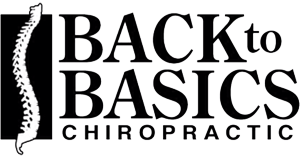Each year approximately 2 million Americans suffer a whiplash type injury. Chiropractic care can be extremely beneficial in these cases. A Chiropractor can help assist patients with both the short and long term effects of whiplash associated injuries. Before we consider the numerous unique benefits offered by Chiropractic care in the treatment of whiplash, let’s briefly discuss what exactly a whiplash injury is Palm Coast Chiropractor .
What exactly is whiplash? Surprisingly, the name “whiplash” isn’t an official medical term at all. Rather the term “whiplash” is a non-medical term commonly used to describe a sprain and strain injury to the soft tissues of the neck. Whiplash is considered an acceleration-deceleration type injury and occurs when the cervical spine, or neck, is abruptly forced to stretch and move beyond its normal range of motion. This typically involves the neck suddenly extending backward and then flexing forward beyond the normal anatomical range of motion. This results in an overload injury due to excessive forces being placed on the cervical spine. The initial injury is actually thought to be tearing of muscle and ligament fibers within the neck. Although predominately an injury to the muscles and ligaments, whiplash may also include injury to the intervertebral joints, discs, and nerve roots. The degree of injury can range from minor to severe.
As if the initial injury weren’t bad enough, the response of the body post injury can further complicate matters. After the injury muscles in and around the area respond to by contracting in spasm to splint and stabilize the area. This limits movement of the head and neck and is the body’s well intentioned efforts to prevent movement and further injury. Essentially the body attempts to make its own soft collar to limit motion of the head and neck. Unfortunately this can eventually lead to chronic pain, inflammation, stiffness and loss of range of motion.
Whiplash is usually associated with an automobile accident, but it can occur in many other instances. Whiplash can also be caused by things such as a fall, or an impact or collision in a sporting event or recreational activity. Some examples are a fall from a horse, a collision in football, or an impact experienced in basketball, boxing, or hockey.
What are some of the symptoms of whiplash? Headache is a frequent symptom of a cervical strain. In addition to headaches and neck pain, other symptoms of whiplash may include:
– Neck stiffness
– Dizziness
– Shoulder pain
– Back Pain
– Changes in vision
– Abnormal sensations in the neck, hands and arms (such as burning, pins and needles, numbness, or tingling)
Surprisingly, symptoms are not always an accurate indication of whether or not a patient has whiplash. Contrary to common misconception, whiplash isn’t always obvious at the time of injury. Many victims of whiplash related injuries often do not consult with a health care provider because they do not have neck pain at or immediately near the time of the accident or injury. This is a mistake because symptoms of a cervical sprain and strain can take time to manifest themselves. Generally speaking, the onset of symptoms is much faster in more severe injury. A severe case of whiplash injury may cause pain and symptoms immediately or within hours. In a more mild case of whiplash symptoms may not occur for weeks or months.
Many victims of an automobile accident do not seek medical or chiropractic attention because their accident occurred at a low speed. There is a misconception within the general public that high speed impacts are needed to cause whiplash. This couldn’t be further from the truth. Studies show that the soft tissues in your cervical spine have an injury threshold of 5 mph. In other words, an impact of 5 mph or greater can theoretically cause damage to the muscles, tendons, and ligaments of the neck.
The likelihood of developing whiplash in an automobile accident depends on a multitude of factors and speed is just one variable. The position of the head and neck at the time of impact, the direction of impact, the position of vehicle headrests, whether or not a seatbelt was worn, and whether the occupants saw the impact coming are just some of the additional factors involved.
It is obvious that any impact or collision should be taken seriously. A victim of a car accident or other impact would be wise to consult with a healthcare provider as soon as possible afterward, even if no symptoms are present. A Chiropractor is a great choice.
Few health care providers are as well educated on the anatomy of the cervical spine or as well prepared to address the musculoskeletal effects of whiplash related injuries as a Chiropractor. Chiropractors receive extensive training in the normal structure and function of the cervical spine. They are also equipped to recognize and treat both the acute and long term effects of whiplash injury.
Chiropractic care can be of great value to a patient in the acute phase of a whiplash injury. During the acute, or early, stage of whiplash a Chiropractor will place an emphasis on controlling and minimizing inflammation, muscle spasm, pain, and symptoms. During this early phase of care a Chiropractor focuses on gentle treatment. Application of ice and cold therapy is common to control swelling and inflammation and to help alleviate pain. A Chiropractor may also use special forms of therapy such as electric muscle stimulation or therapeutic ultrasound to relax muscles and help reduce pain. Cold laser therapy, acupuncture, trigger point therapy, massage therapy, gentle stretching and joint mobilization techniques are also common early treatment techniques available to many Doctors of Chiropractic.
